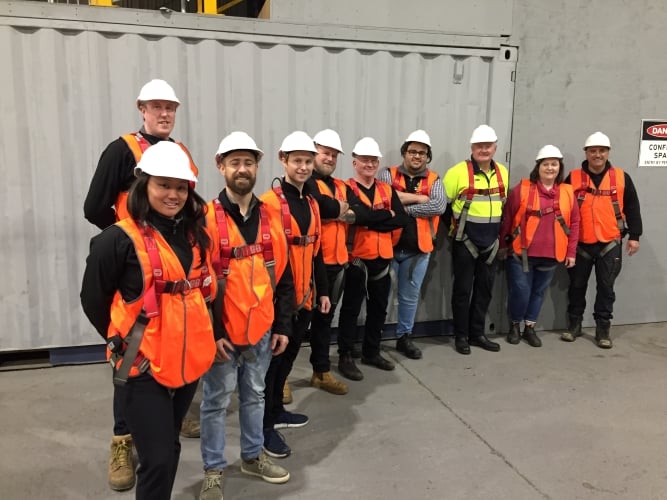
During June, the Programmed Facility Management, VSBA team undertook the ‘RIIWHS204E Work safely at heights’ training. The training involved half a day of theory and half a day of practical working at heights activities.
All Project Manager’s on the Make Safe team are now qualified to work safely at heights, albeit the plan is not for Project Managers to be working at heights, but to be able to understand and assist trades people with working at heights, risk reduction and to maintain a proactive safety culture on this contract.
RIIWHS204E Work safely at heights - Overview
- Identifying and assessing fall hazards
- Conducting risk assessments
- Implementing control measures
- Harness inspection, fitting and use
Section 21 of the Occupational Health and Safety Act 2004 (Vic.) requires that employers provide an adequate level of information, instruction, training and supervision to employees to enable them to work safely.
Australian Standard AS1891.4 Industrial Fall Arrest Systems and Devices – Selection, Use and Maintenance’ states, “Operators at entry level who are required to perform harness based work at heights shall be trained and assessed in a nationally accredited general height safety course or a course of equal standard, to a level of competence where they can work under a supervisor.”
'Falls from even moderate heights can leave workers with permanent and debilitating injuries. The risk of serious injury or death from a fall increases significantly if you are working at heights over two metres. While falls can occur in all industries, they are most common in construction, manufacturing, community services, trade, communications, transport, and storage.'
'As an employer, you have a general duty to make your workplace safe. This includes controlling the risk of falls. If there is a risk of a fall of more than 2 metres, specific duties apply.'
Reference – Work Safe Victoria https://content.api.worksafe.vic.gov.au/sites/default/files/2018-06/ISBN-Falls-prevention-guide-2017-06.pdf
Key takeaways from our team
- Adam – “The working at height safety equipment is very user friendly, even when conducting practical tasks.”
- Alison – “Each state has its own WHS laws and a regulator to enforce them.”
- Meg – “With how often ladders are used, it surprised me that it is the last option for working at heights. An eye opener to the dangers of live edges, and how critical it is to have a working condition/adequate fall protection and fall arrest systems.”
- Lee – “I now feel more confident when discussing Working at Heights with our Vendors and have greater insight to how we should approach Height related work.”
- Jack – “All scaffolds are required to be tagged when in use; including mobile scaffolding every 30 days.”
- Joseph – “Don’t cut corners. Don’t skip safety controls because you are having a quick look. Working at heights is serious and should be treated as such.”